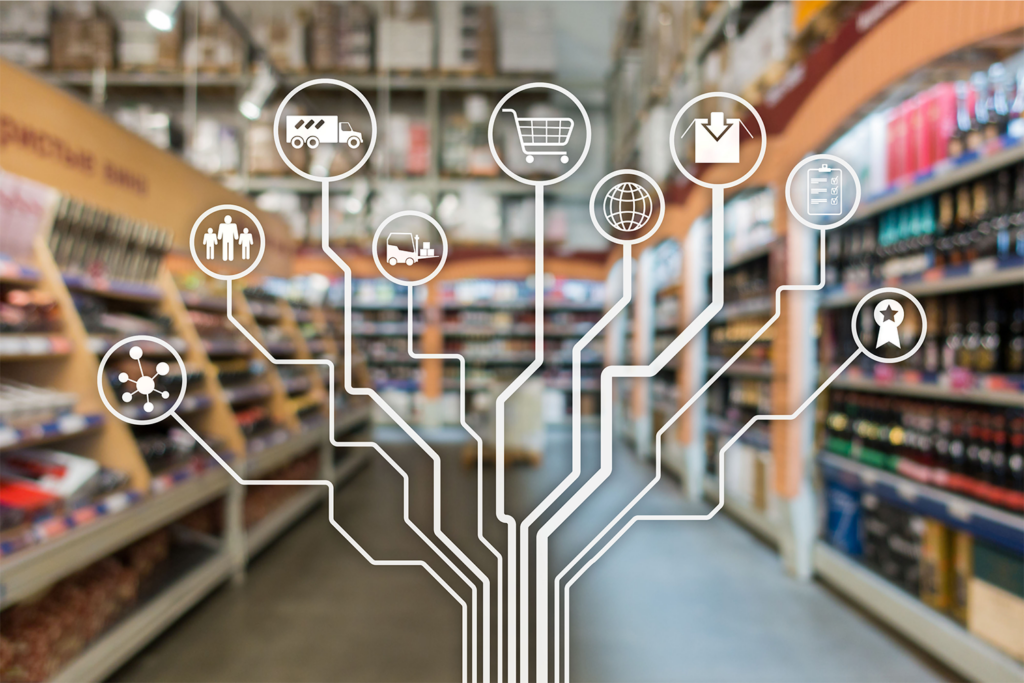Many small or new brands concentrate their resources on one or two marketing channels, whereas the right approach is more expansive. No matter the age or size of your brand, omnichannel marketing can be extremely beneficial.
But don’t just take our word for it — take a look at how this concept has worked for big brands and how it can work for smaller ones too.
What Is Omnichannel Marketing?
Omnichannel marketing is an approach that incorporates all different channels, promoting a convenient and seamless user experience. This approach differs from a multichannel marketing approach that only incorporates a few different channels.
To truly be considered omnichannel, you need to go beyond the online world to make the entire experience more engaging and easy for your customers.
Why Is Omnichannel Marketing Beneficial?
Incorporating all possible channels into your business’ marketing funnel isn’t an easy task. However, it is worthwhile. Here are some of the benefits of implementing an omnichannel marketing approach:
- Reach: When you’re marketing in more places, naturally, you’re able to reach more people. When you leave certain channels untapped, you’re leaving groups of people untapped. Make sure that you’re marketing where your customers are with an omnichannel approach.
- Profits: When more people are able to find your brand and products easily, they’re more likely to make a purchase. You can make this process easier for them with an omnichannel approach that involves mobile-friendly websites, mobile applications, live chat features, and more.
- Satisfaction: People who can use your user-friendly platforms and features seamlessly will be satisfied with their experience. As a result, they’re also more likely to become loyal and repeat customers.
What Channels Are Needed to Be Considered “Omnichannel”?
The term “omnichannel” is quite vague — so let’s break it down by talking about some of the channels that you need to focus on for your marketing approach to be considered “omnichannel.”
Keep in mind that these are just a few examples, and there are many more ways that you can reach your customers with engaging and meaningful content.
1. Branded Website
The first thing you need is a branded website. This should be the basis of your entire brand — as a result, it needs to be done well.
Make sure that you include relevant information about your brand and your products. It’s also a good idea to include social proof that drives customers to make a purchase.
2. Social Media
The second thing you need is a social media strategy. Depending on your brand and your target customers, you may want to consider establishing a presence on platforms like Facebook, Instagram, Twitter, TikTok, YouTube, and Snapchat.
Start building your following on these platforms with content and incentives. For instance, you can do a giveaway where users have to share the post to qualify. You can also invest in paid social media advertising.
3. Mobile Application
The third thing that you need is a mobile application. While this may not work for every brand, it’s certainly beneficial for many.
If you’re not able to create a dedicated and separate mobile application for your brand, at the very least, make sure that your website is optimized for mobile devices.
4. Email and SMS
From there, you need to focus on email and SMS marketing methods. As it turns out, email marketing is still relevant in 2021 as it helps you build relationships and loyalty with your customers. However, if you want to bring your strategy into 2021 and set yourself apart from the competition, you should also try SMS marketing.
SMS marketing is a more instant and personal method of marketing. However, you’re limited in terms of what you can send. Even more so, you need to make sure to follow SMS marketing best practices to keep your subscribers.
5. Content and SEO
Finally, you need to invest in content marketing and SEO. You can incorporate content marketing into your website in the form of a business blog. Doing so can then improve your search engine optimization so long as you’re using the right keywords, backlinks, and word counts.
This approach can take time to establish but can be extremely beneficial when you end up ranking number one on Google.
5 Examples of Brands With Impressive Omnichannel Marketing Experiences
If you’re still a bit confused about the concept of omnichannel marketing, here are some examples of brands with impressive omnichannel marketing experiences to help guide your own approach:
1. Disney
Disney is a huge brand that truly nails the omnichannel marketing experience. For starters, they invest heavily in a mobile-friendly and user-friendly website that allows you to book trips and tickets easily.
When it comes time to take your trip, they have a mobile app that easily stores your reservations, tickets, itineraries, etc. Finally, they have Magic Bands that act as hotel keys, fast passes, photo storage devices, and more for a true omnichannel approach.
2. Starbucks
Starbucks is another worldwide brand that has embraced an omnichannel marketing approach. Starbucks has made it incredibly easy to purchase coffee and treats with their rewards card.
You can access information about this card over the phone, on their website, in a store, or on their app — making it one of the best customer loyalty programs out there.
3. Sephora
Sephora has developed a true omnichannel marketing approach with its Beauty Bag feature. This feature allows customers to access item details and virtually try on different items with an in-store tablet. From there, customers can also track and access their rewards either in-store, on their website, or in their app.
4. Spotify
Spotify is almost exclusively an online brand — so why the need for an omnichannel marketing experience? As it turns out, this approach is beneficial even when you’re solely online. Spotify uses an omnichannel approach by integrating access to its platform from mobile phones, desktop computers, and television applications.
This means that you can start playing a song on your television but change it on your phone — talk about convenience.
5. Apple
It’s no surprise that Apple invests tons of resources into developing an omnichannel experience for their worldwide brand. Apple’s iCloud feature allows users to sync all of their different devices together — including iPhones, MacBooks, iPads, Apple Watches, and more — for a seamless user experience.
Working with the brand is easier than ever, thanks to their website and in-person Genius Bars.
Wrap Up on Omnichannel Marketing
As you can see, an omnichannel marketing approach is extremely valuable when utilized correctly. However, it can be difficult to start the process of integrating all of these different channels. Working with an expert helps make the process easier and more successful.
Greg Gillman specializes in omnichannel growth strategies that have helped his clients generate $4 billion in annual revenue. Reach out today to see how he can help your brand expand to essential channels and start to grow your business.
Sources:
The Importance of Omnichannel Marketing | Forbes
Omnichannel Customer Experience: Why It Matters More Today Than Ever | Entrepreneur
10 Best Marketing Channels for Your Small Business in 2021 | The Motley Fool


